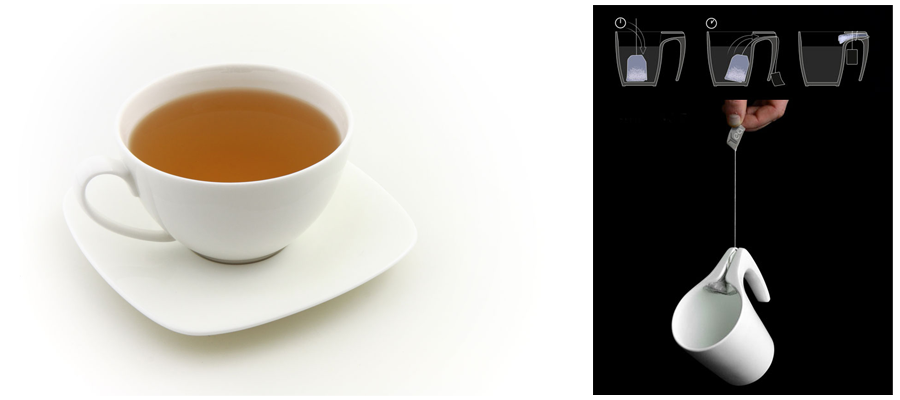Better User Experience by Design
As a designer, I can never escape the experience of design. It is everywhere.
From the industrial design in the cup you drink your coffee out of to the ad design of the billboard on the side of the road to the design of the page and device you are reading this on; each and every thing in our man made world has been designed with an experience in mind.

Better design leads to an enhanced user experience, regardless of the medium. Slingshot Tea Cup, Designer: Samir Sufi
As technology evolves, products evolve, design evolves and inherently how we experience design evolves. In my opinion, the evolution of the experience of design is a constant and should be considered on par with the laws of nature. It is a requirement, a mandate that cannot be changed. Now the genesis of that mandate, much like origins of our understanding of the laws of nature, begins with questions:

In our designed world, opportunity for improvement of a user experience is everywhere. The Ketchup King, Designers: Hwandong Lee, Myung Gyu Kim, Nari Lee & Taeno Yoon
- How can we change our perspective and attack a problem from a different angle?
- How can we benefit people more?
- How can we make a better product for people and for our planet?
- How can design affect change in the world?
- How can we make the user experience better?
- And, more practically, how can creating user experiences achieve our client’s business goals (which, ideally, would answer at least one of the other questions too)?
The Experience is the Product
Executing goal-oriented strategies that are focused on creating successful user experiences is our product. And, ultimately, our goal as experience designers is to create a better product.
A better web experience, a more effective product interface, an easier checkout process, a more impactful real world experience, and a more efficient mobile application can all be products that are the result of goal-oriented digital strategies.
The Experience achieves the Goal
Creating effective and successful user experiences achieve business goals. A user-centered approach (to any engagement really, not just digital interactions) creates an atmosphere where the focus can shift from the bottom line business goal, to creating an indelible experience. The experience, in turn, creates a cyclical base of support whereby user (customer) engagement becomes the engine that drives the achievement of the business goals.

The Adidas Shoebox Instillation concept was a special build by Jack Agency (UK).
The ultimate goal of Adidas is most likely to increase sales. And a recent strategy to achieve that goal was limited engagement pop up stores that create an indelible user experience. A new product line was pushed out in limited release to a core audience at strategic locations and venues that corresponded with a new global ad campaign and larger product line release.
Scarcity of the Engagement + Exposure to Core Brand Audience lead to Increased Overall Consumer Awareness that equal Increased Sales of an in demand product. The user experience achieves the business goals.
User Experience in the Digital Space

Following a user-first approach, we crafted the site architecture and user interface of firefightermedic.com to focus on achieving organizational goals through user engagement.
Our strategy included creating defined user experiences based on levels of information access, creating an environment of scarcity within the user experience to drive membership growth, and developing strategic information architecture to allow the most efficient content acquisition by users.

We made the store and the resource sections as easy to use as possible.

Every detail of the user experience was crafted to make the system easy and intuitive to use.
The Results
The site and application have just recently been released, but early data and user response has been unanimously positive. Search exposure has increased overall site traffic, time on site has increased for both members and non-members, and membership conversions are steadily increasing month over month.
Three birds with one user-centered creative approach
Regardless of an experience’s medium, either digital or analog, crafting an indelible experience and taking a user-first approach to the creative process is one of the most effective methods to achieve meaningful user/customer engagement, improve the overall experience of the user and, by proxy, achieve the goals of business.